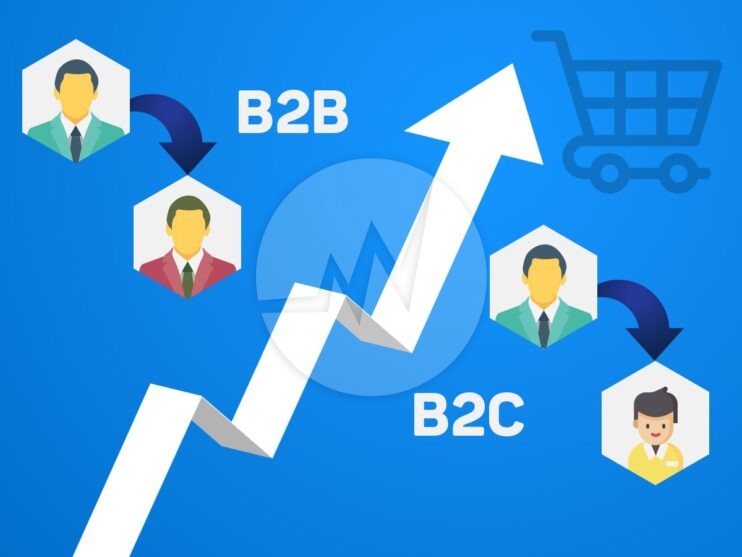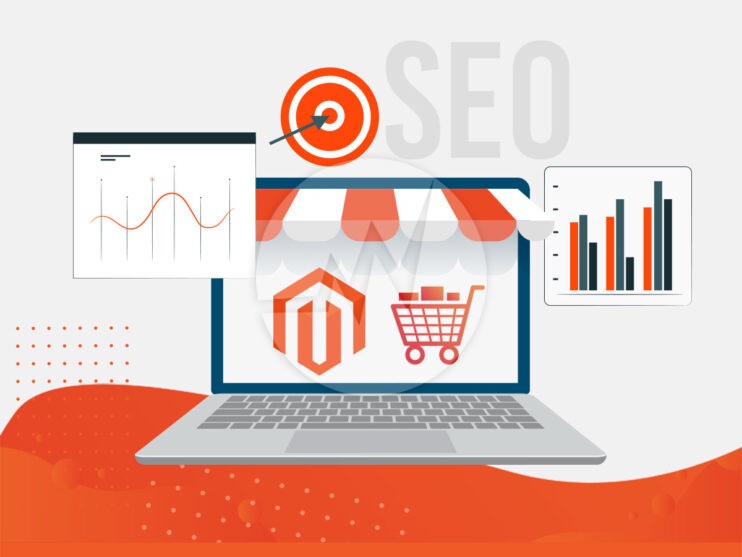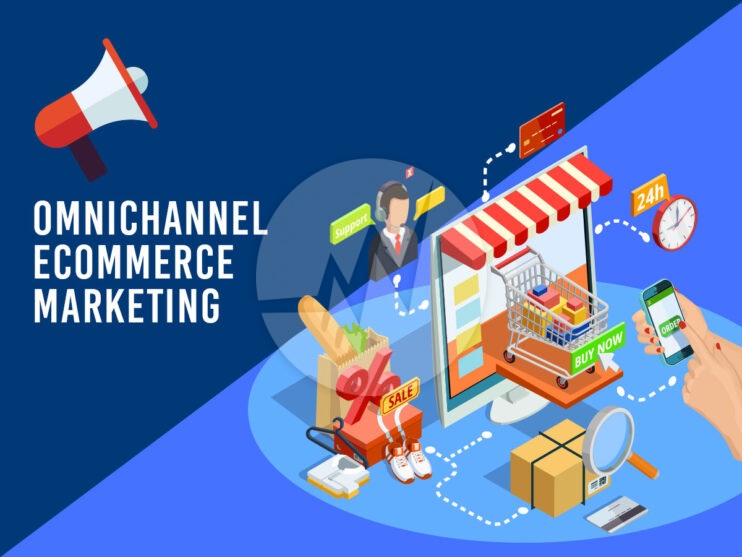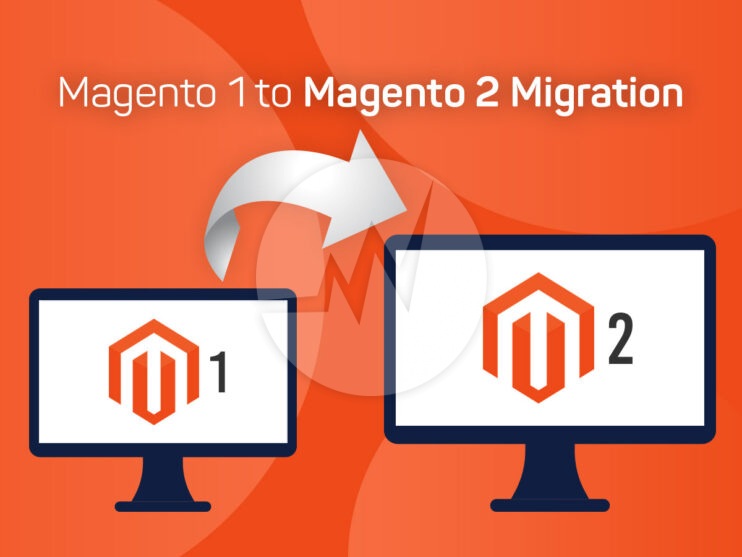A Comprehensive Guide for B2B and B2C Ecommerce Store to Boost Sales & Performance

This guide sheds light on the importance of an ecommerce store for medium-sized companies. Every middle-class decision maker comes to the point of considering whether and in what form an ecommerce can be used.
This is exactly where we would like to help you. We have over 19 years of experience in the planning, implementation, support and solution of ecommerce and would like to share this blog with you. This comprehensive guide is intended to provide a brief insight and possibly aimed particularly at B2B and B2C companies.
Customer acquisition plays a central role in every company. As a decision-maker, you strive to establish ways to attract customers. The focus is on the lowest possible cost per customer. But at the same time reaching customers who mean high sales / profits. Another major factor is the reduction in process costs and, at the same time, increased process reliability. Ideally, all this with the aim of customer orientation. Cheaper, faster and better sales for the customer. These are roughly the goals of an ecommerce store.
It is no secret that digitization and especially an ecommerce central importance. Ecommerce means of communication that are comparable to letters, telephones, faxes and e-mails. Something is completely turned upside down or massive new opportunities arise that were never there before.
Do you think you are reading this guide for exactly this reason? Then, you are exactly at right place.
Why does a medium-sized company need an ecommerce store?
Fully Automatic Customer Acquisition
At first that sounds like a marketing lie, but it is 100% the truth. An ecommerce store is the central tool to reach new customers online. Ecommerce is not even primarily about sales. The first step is to show what the company can and does at all. This alone gives potential new customers a much better insight into the product / service range than any exhibition stands, flyer or similar could achieve. Videos, flyers, info texts, product images, inquiry tools, configurators, simulators but also virtual reality and more. Those interested can find all of this 24/7 in the ecommerce.
The potential customer enters your ecommerce store voluntarily and can look around, inform, ask things or possibly order things directly. It depends on how well the ecommerce has been planned and implemented. The easier the transition from “clicking” the page to the request / call, the more efficient this new customer sales works. Nobody forces or annoys the customer to look around the ecommerce store. The prospect is completely voluntary there because they are looking for or need something.
Reduce Process Costs of Ecommerce Store
An ecommerce is ideal for reducing process costs. Instead of cumbersome processing of recurring orders by field service, office staff, e-mail or even fax / telephone, it is understandable that it is also digital. Existing customers can quickly and easily submit recurring orders via the ecommerce.
The internal process has time to take care & reduce processing; and can create individual offers there, provide extensive advice and simply invest better time.
Enhanced Process Reliability through Fewer transmission errors of Ecommerce store
This in turn leads to an improvement in process reliability. There are no manually entered orders, information copied from emails or similar incorrect procedures. The customer himself states in the ecommerce what he wants to order, sees the order, confirms it and then the processing continues.
The case that a customer claims he has ordered ABC 5 pieces but ABC 4 pieces are no longer available. It is 100% documented and visible what exactly the customer ordered when and whether / what may have gone wrong internally or not. This eliminates many unnecessary discussions due to transmission errors or misunderstandings.
Sales Force Receives More Valuable Prospects or Existing Customers
The field staff and their success rates also benefit! The field service receives qualified leads! Customers are already informed in detail about the offer via the ecommerce. Ideally, they have already made a very precise request. After an initial validation of the potential customer, the customer can now receive targeted advice.
The sales representative gets a customer on the silver tray! Instead of having to bother customers, the sales force has interested parties / customers who are already very interested in the offers and “only” have to be advised.
Online Store becomes the Central Tool / Platform for Customer Communication
The ecommerce store serves as a central tool in working with and for the customer. The back office, field service, at trade fairs or in the case of spontaneous contacts / calls can always be referred to the ecommerce store. The customer, prospective customer or applicant can view the products / services quickly and easily.
If the ecommerce has been done well, it will continue from there with info flyers, inquiry tools and similar things. The ecommerce is simply a practical universal tool that finds its place in daily contact with the customer.
Customer-Oriented Action becomes more than just a Phrase
Another elementary point is the chance to provide seamless customer-oriented actions. Everyone in marketing knows that customers are just people or decision-makers are used to shopping on Amazon and other online stores.
Of course, they also expect this in the B2B environment. Everyone knows the situation of positive surprise. You are looking for something and after a short search via Google you are already on a super informative page. This explains exactly what is needed in the situation. A few clicks away, for example, a required spare part is ordered. We are happy that everything went so well. Then we are happy when it is delivered and probably every time we become aware of it again. But it is a normal behaviour in private life.
Why is this not often the case in business? Why do your customers have to make calls through the area until they receive a positive surprise from you by telephone? In the “worst” case, customers tell you that they have been doing this for months? Years? after exactly what you offer! Wouldn’t it be fantastic if these customers would contact you directly after a short search via Google? How much would the inquiries increase if interested parties knew immediately that you actually exist? And that they immediately know what you can really do? What would it be like if this were the case in your company?
As you have probably already noticed, this is nothing less than a completely different way of thinking than the classic (and yes outdated) product-oriented marketing. An online store is about real “customer-oriented marketing”. Ideally, this initiates a complete change of marketing one.
Establishment of Pull Marketing in Online Store
A central point of pull marketing is usually search engine optimization. This allows top placements on Google for the topics relevant to your customers. The whole thing is easier than you think! You just have to adhere to different rules and behaviours and your visibility increases extremely with Google. Requests that you did not expect will become normal.
With all these measures, the customer continues to qualify himself. He turns from the prospect to the contact until he becomes a customer or regular customer. Ideally, a customer is advertising other customers. However, the need for this requires the necessary attitude and mind-set! And the online store is an ideal basis to establish this way of thinking in small steps. The experience can be transferred to your own B2B business.
The Competition Doesn’t Sleep!
The final factor is simply that the competition doesn’t sleep. Nobody can oversleep digitization. Everyone knows that there is digitization. Anyone who overlooked it however, is not actively acting. This is a deadly mistake for your own company and will not make a decision.
Instead of asking the customer about one, one would be forced to issue absurd prices for mail, address data, trade fairs and more. It’s all about surviving financially because customer requests go down.
The reason is that the competition doesn’t sleep, of course! Competitors are constantly working on their own digitization. Direct mail and trade fairs are less and less successful.
The difficulties with ecommerce store for medium-sized companies
As per throughout research, we have been able to get to know a wide variety of companies know the challenges. In the mid-size business, there are major chances of a lot of wild growth.
There are chaotic price structures where nobody really sees through or only the company itself. Various invoice discounts in combination with customer discounts but of course only on certain products.
So, there is complete chaos due to the fact that highly individual prices and conditions were negotiated with customers. This chaos has to be brought to an ecommerce store.
What is the first step to the ecommerce store? – Minimum Viable Products (MVP)
An online marketing advice plan do check for acting start small! Validate what is going well / badly and expand it in the next small step! Every business has internalized this procedure and it is exactly the same here. Under no circumstances invest huge amounts only to notice that the functions were no prospect or customer uses it.
Then you can consider how an ecommerce store should be used in this complex and with which goals. As soon as there is a rough idea, you can start planning further.
The goal should be to have a concept of what the first version of the ecommerce store should be in order to still be functional with minimal functions. The goal is therefore the implementation of a pilot project or the buzzword “Minimum Viable Product (MVP)”. Both are simply about starting as small as possible, but directly involving real customers. Then you can immediately see what is going well / where and what needs to be readjusted.
Of course, there will be a massive need for adjustments and extensions. These can then be prioritized and the next slip of adjustments / extensions goes online. A new validation and it goes on.
Things including UI/UX design is simple and come to the very end. The design is just the design, of course it has to reflect the company image etc. But it doesn’t help if an ecommerce store fits from the design to the company but was planned so miserably that no new customer was recruited.
If you are looking for marketing opportunities for your existing ecommerce store or want to create a new ecommerce store or require any type of ecommerce solutions, Please explore our ecommerce solutions! We also provide ecommerce website maintenance services, online store maintenance services and more. For more information, Please visit our website maintenance services!






